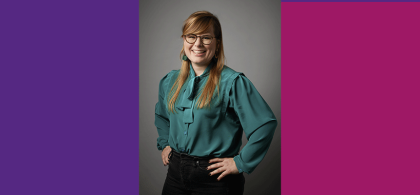
NETWORK BUILDING: ADVICE FROM EXPERTS AND ALUMNI
“Building a network is about building a circle of connections starting with the people whom you already know,” Isabell Sthémer, connection creator and networking expert, said. But it’s not always easy for students and young graduates to make initial contacts and then benefit from them.
However, it’s vital. “Making contacts, calling on behalf of someone always works better than spontaneous contacts,” said Hervé Bommelaer, associate at the outplacement firm Enjeux Dirigeants.
Here are a few pieces of good advice for building a network.
#1 NETWORK BUILDING: STRATEGY
- Update your profiles on social media (NEOMA Alumni and LinkedIn). For Isabelle Sthémer, networking expert, authenticity is essential. “Your profile needs to match who you are in real life.” Think about how your profile is initially presented: it should put emphasis on key words related to your skills and expertise, rather than a job title. The more a profile is filled out, the more it is referenced.
- Create a specific plan. The more you have a specific aim (search for a position, an opportunity abroad, the start of an activity), the easier it is to target professionals who could help you. For Agnès Flouquet-Vilboux, general director of NEOMA Alumni, “working in finance” is already a plan.
On professional networks, Caroline Avot (‘98 CESEM graduate), consultant/trainer at Colibri Stratégie Digitale, recommends that you choose a subject that you’re interested in and respond to, comment on, and publish anything that may be connected to it.
- Target contacts. Agnès Flouquet-Vilboux advises students and young graduates against posting their CV on LinkedIn, “when looking for work, there is very little chance that it will be read.”
For Caroline Avot, the best type of connection targeting can take two forms. Find a common point (two NEOMA Alumni with something to share/discuss) or make your contact understand that you can offer them something.
“Targeting your contact correctly is also about making them understand that you’ve looked into who they are and what they do,” Caroline Avot said. On LinkedIn for example, she strongly recommends adding an accompanying message to your invitation to provide context to your contact request.
Also, the initial contact shouldn’t have a commercial aspect involving a sales or service offer or have a job search angle where you’re clearly looking for an employment position. People will be suspicious. It’s better to ask questions like: What is your job, your duties? Who do you report to? What is your view of the market? Do you have any tips for networking on LinkedIn?
#2 NETWORK BUILDING: THE ROUTINE
Building a network is about being consistent and committed. “You need to always be network building!” Isabelle Sthémer said. Networking experts recommend devoting twenty to thirty minutes per day to all types of social interactions. This can take several forms.
- On LinkedIn, like a post or leave a comment on an article.
- Catch up with a contact over the phone, regardless of whether they are key person in your network or not.
- Take advantage of certain events, like the time after New Year’s, a professional anniversary or a job change to make contact again.
- Connect people who don’t know one another, thereby doing a favour and being a part of an information stream that you can take advantage of.
- Have lunch once a week with people who are outside your normal circle, whether they are from within your company or not.
For all of these interactions, politesse is paramount. “Certain people do not routinely thank their contact after a network meeting,” Hervé Bommelaer from the Enjeux Dirigeants outplacement firm said. For him, it’s nothing to panic about, emotional intelligence takes over. According to him, the keys to the networking game are trust and mutual benefit.
# 3 NETWORK BUILDING TO START AN ACTIVITY
To start an activity, the networking strategy changes slightly. Here are the best angles that experts suggest taking.
- Test your project by creating surveys on LinkedIn
- Go to business clubs to pitch your activity. You can find referring partners there or even clients. For example, it’s the way BNI (Business Network International) operates.
- Take advantage of alumni events: “They offer a chance to obtain information that you can’t find anywhere else,” Agnès Flouquet-Vilboult, general director of NEOAM alumni association, said. Join clubs based on your interests (sectors of activity, sport, culture) or groups, for those who live in the same are, really help with making initial contacts.
#4 NETWORK BUILDING: OVERCOMING SHYNESS
For Hervé Bommelaer from the firm Enjeux Dirigeants, being afraid of making that first contact is the first obstacle in network building. Feeling like you’re unworthy or inadequate is the second. He wants to be more reassuring. “Generally, contacts appreciate being consulted, the risk of coming across a toxic person is rare.”
For networking expert Isabelle Sthémer, “It is always nice to be valued for your expertise, to feel useful and provide advice. A networking interview is mutual beneficial for both parties.”
Caroline Avot from Colibri Stratégie Digitale recommends not to always contact a senior person for their feedback. It can be more reassuring to contact more junior professionals.
Making contact is one thing, expressing yourself on social media is another. A lot of people wonder if it is reasonable for them to express their views on LinkedIn? Yes, by following these rules: a good comment offers an additional or different point of view. A good post tells a story or comments on a current event.
Always with the aim of being mutually beneficial, it is appropriate to tag people who may be interested in a post. Or thank them for their participation in an event, something the event’s organisers also appreciate. If you are still hesitant, professionals offer services for defining your editorial approach on LinkedIn. ❚



